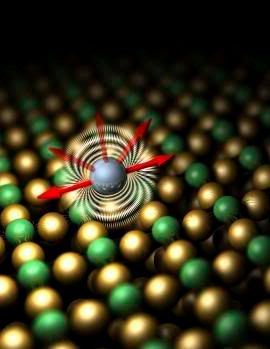
The work revolves around harnessing magnetic anisotropy, a property of atoms. Something is anisotrophic if it has different values when it faces in different directions. If a substance is anisotrophic and the orientation of the substance can be controlled, then the orientation--the theory goes--of the atom can come to represent the 1s and 0s of digital computing.
Potentially, atomic-level storage or switching could result in incredibly tiny computers. With atomic storage, you could fit a 1,000 trillion bits of information in an iPod, according to IBM estimates.
In the first paper, titled "Large Magnetic Anisotropy of a Single Atomic Spin Embedded in a Surface Molecular Network," researchers described how they arranged individual iron atoms with a scanning tunneling microscope on a specially prepared copper surface. With the atoms in place, the researchers were then able to measure the strength and orientation of the anisotrophy of the individual atoms.
The second paper, meanwhile, describes the performance of a switch created from two hydrogen atoms inside an organic molecule called naphthalocyanine. Researchers have made single-atom switches before, but the molecules had a tendency to change shapes. This problem has not, so far, surfaced in the IBM molecular switch. (Interestingly, IBM discovered the properties of naphthalocyanine by accident. It was studying the molecule in a separate project, on vibration.)"




No comments:
Post a Comment